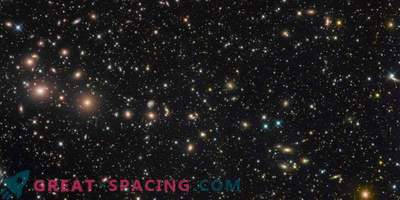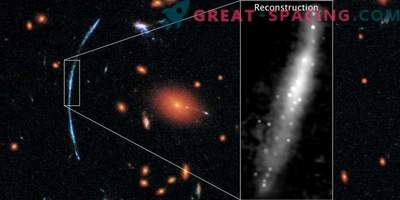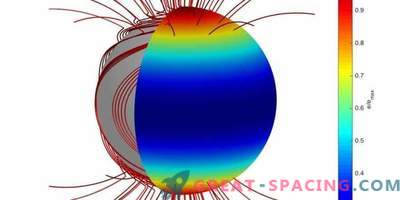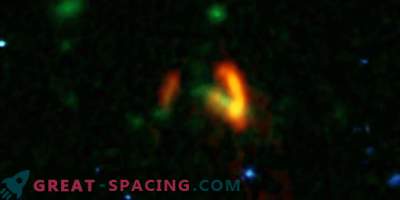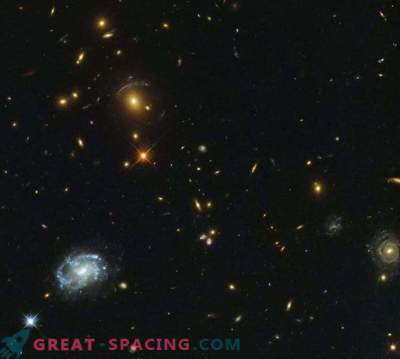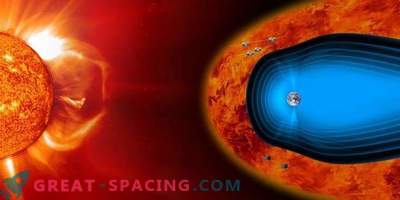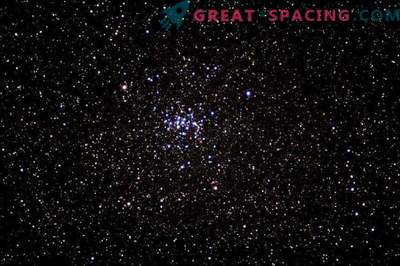
With a large-scale cosmic lens, researchers were able to calculate the magnetic galactic field, located almost 5 billion light years away. This is an important achievement, allowing you to better understand the origins of the formation of magnetic fields.
The researchers aimed at the study of a star-forming galaxy located between us and the quasar. Galactic gravity functions as a large-scale lens that divides a quasar into two frames. The waves received from the quasar are 8 billion light-years distant from us.
Wave polarization passed through various galactic areas and revealed the details of its magnetic field. Analysis in the Very Large Telescope shows a significant difference between two gravitational-lens frames, where the wave gravity changed. That is, the galactic areas had different effects on the waves.

Galaxy captured by the Hubble telescope and gravitational-lens review
It turned out that the galaxy has a large-scale coherent magnetic field. It appeared at the moment when the space reached 2/3 of the modern age, which means it is possible to track the evolution of magnetic fields.
The information agrees with the theory that magnetic fields are formed through active dynamos. But there are other processes. To find out exactly what fits into this case, you need to analyze more distant galaxies and calculate their magnetic fields.

